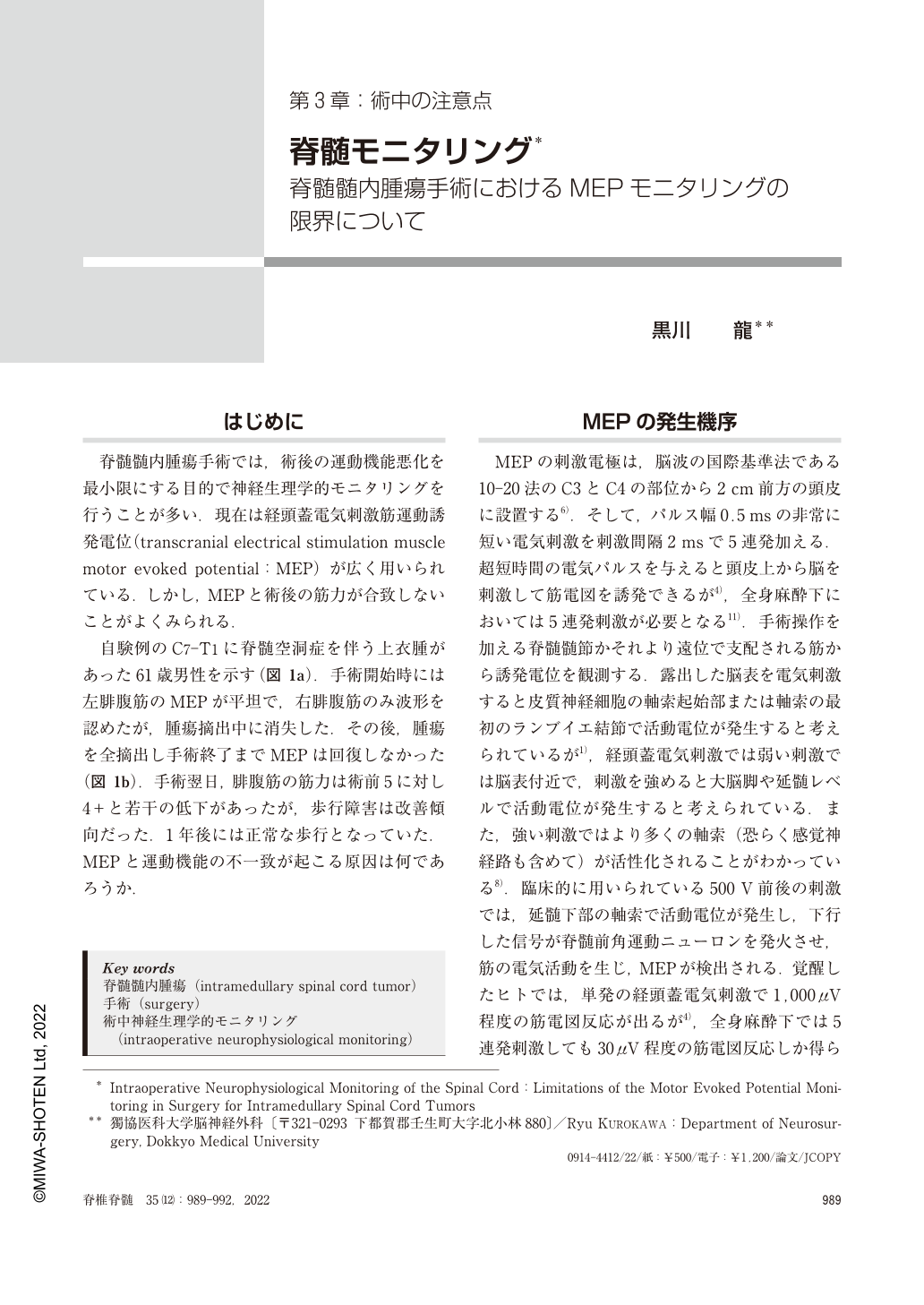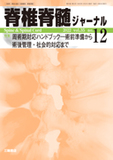Japanese
English
特集 周術期対応ハンドブック—術前準備から術後管理・社会的対応まで
第3章 術中の注意点
脊髄モニタリング—脊髄髄内腫瘍手術におけるMEPモニタリングの限界について
Intraoperative Neurophysiological Monitoring of the Spinal Cord: Limitations of the Motor Evoked Potential Monitoring in Surgery for Intramedullary Spinal Cord Tumors
黒川 龍
1
Ryu KUROKAWA
1
1獨協医科大学脳神経外科
1Department of Neurosurgery, Dokkyo Medical University
キーワード:
脊髄髄内腫瘍
,
intramedullary spinal cord tumor
,
手術
,
surgery
,
術中神経生理学的モニタリング
,
intraoperative neurophysiological monitoring
Keyword:
脊髄髄内腫瘍
,
intramedullary spinal cord tumor
,
手術
,
surgery
,
術中神経生理学的モニタリング
,
intraoperative neurophysiological monitoring
pp.989-992
発行日 2023年3月31日
Published Date 2023/3/31
DOI https://doi.org/10.11477/mf.5002201986
- 有料閲覧
- Abstract 文献概要
- 1ページ目 Look Inside
- 参考文献 Reference
はじめに
脊髄髄内腫瘍手術では,術後の運動機能悪化を最小限にする目的で神経生理学的モニタリングを行うことが多い.現在は経頭蓋電気刺激筋運動誘発電位(transcranial electrical stimulation muscle motor evoked potential:MEP)が広く用いられている.しかし,MEPと術後の筋力が合致しないことがよくみられる.
自験例のC7-T1に脊髄空洞症を伴う上衣腫があった61歳男性を示す(図 1a).手術開始時には左腓腹筋のMEPが平坦で,右腓腹筋のみ波形を認めたが,腫瘍摘出中に消失した.その後,腫瘍を全摘出し手術終了までMEPは回復しなかった(図 1b).手術翌日,腓腹筋の筋力は術前5に対し4+と若干の低下があったが,歩行障害は改善傾向だった.1年後には正常な歩行となっていた.MEPと運動機能の不一致が起こる原因は何であろうか.

Copyright © 2023, MIWA-SHOTEN Ltd., All rights reserved.


